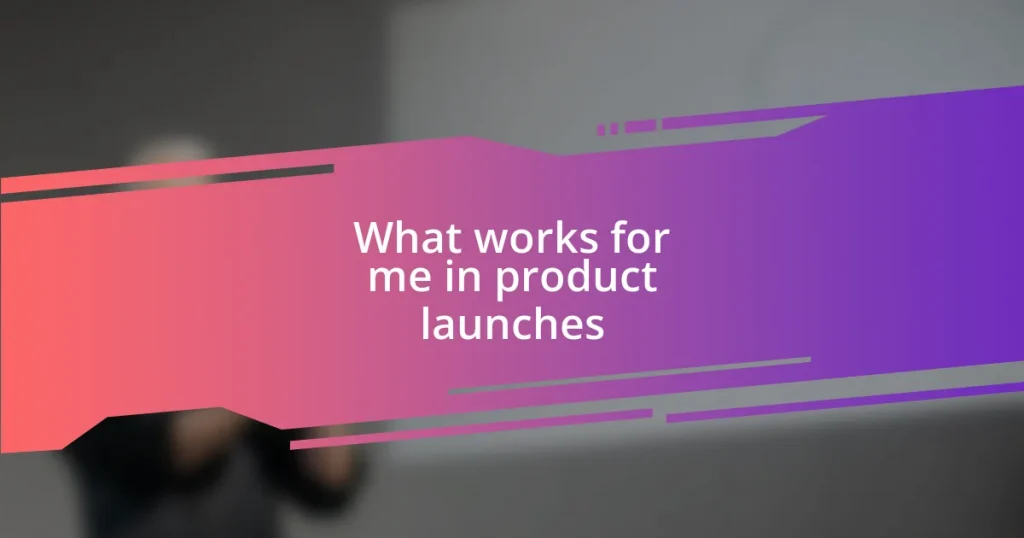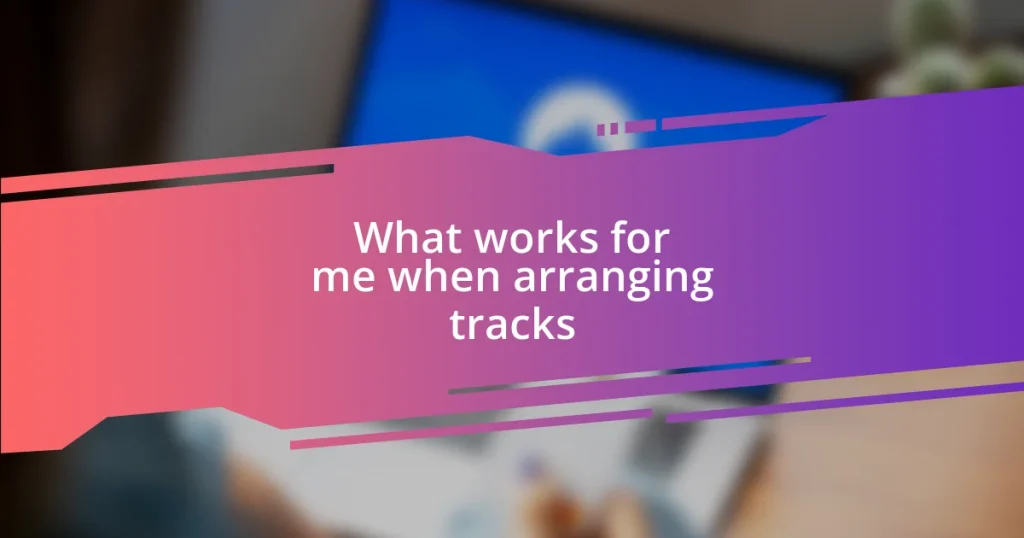Key takeaways:
- Successful product launches require effective planning, emotional storytelling, and audience engagement to create anticipation and build a community.
- Identifying and understanding your target audience through direct engagement and feedback is crucial for crafting effective marketing strategies.
- Measuring success involves analyzing not just sales figures, but also customer sentiment and feedback to drive continuous improvement for future launches.
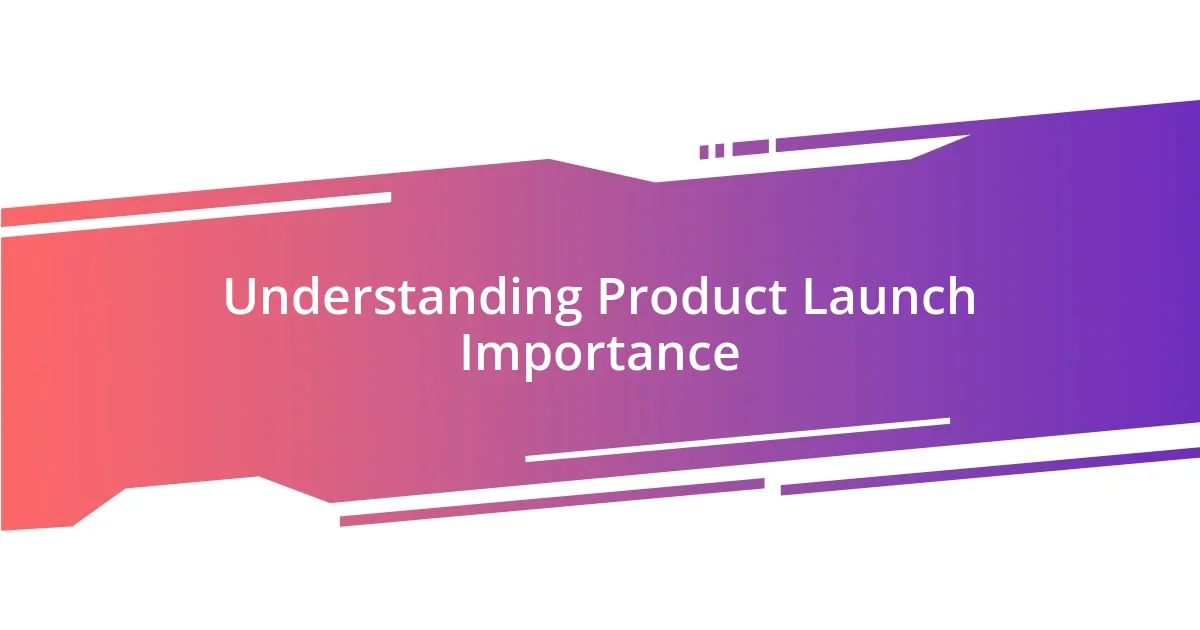
Understanding Product Launch Importance
A product launch is like the debut of a long-awaited movie. I still remember the excitement I felt promoting my first software launch; it was a whirlwind week full of sleepless nights and adrenaline. It’s not just about the product itself; it’s about creating a buzz that resonates with your audience and sets the stage for success.
When you think about it, a successful launch can make or break a product. Have you ever wondered why some products fly off the shelves while others barely make a ripple? From my experience, the difference often lies in the planning and emotional connection made during the launch phase. It’s all about telling a compelling story that engages your potential customers, making them feel like part of something special.
I’ve learned that the anticipation built before a launch can create a community around your brand. The connections I forged with early adopters during my last product launch were incredible. Their feedback not only shaped my product but also empowered me to continue refining my approach, reminding me that a launch is not just a singular event; it’s an ongoing conversation with your audience.
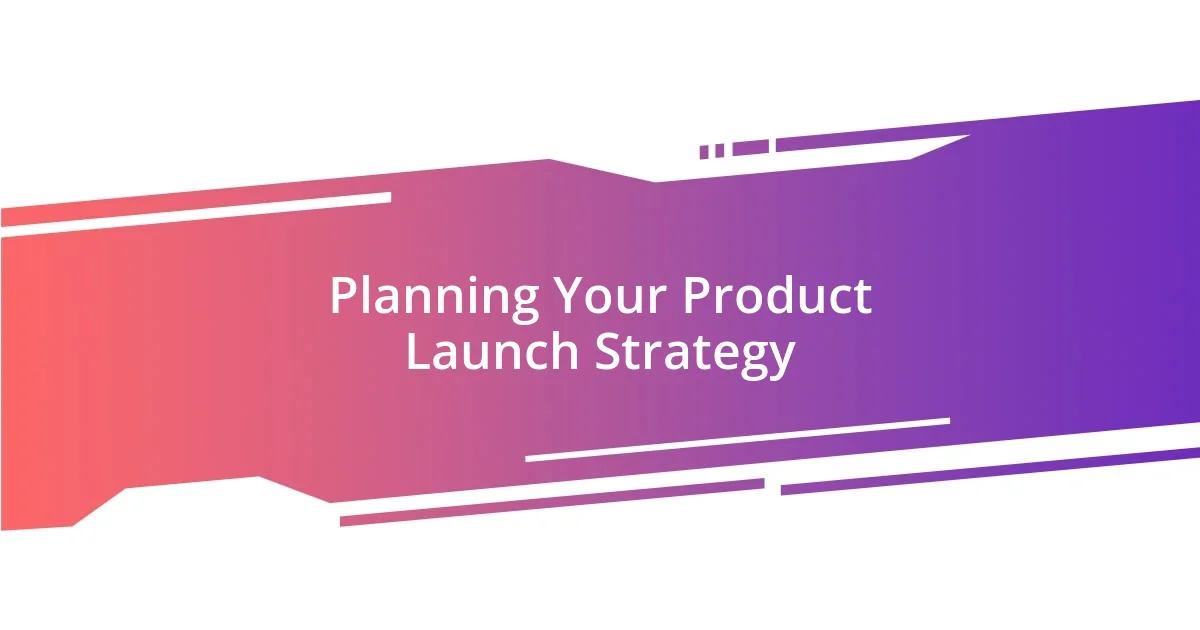
Planning Your Product Launch Strategy
Planning a product launch strategy is akin to constructing a framework for a grand event. I recall the time I meticulously mapped out my last product launch. It involved setting clear goals and establishing key performance indicators (KPIs) to gauge our success. Focusing on every detail, from marketing channels to target audiences, helped me stay organized and reduce stress as the launch date approached.
Each product launch is unique, but there are some strategies I found consistently effective. For instance, leveraging social media platforms for teasers and sneak peeks really helped build anticipation. I remember crafting excitement through countdown posts and behind-the-scenes content. This not only engaged my audience but also stirred enthusiasm leading up to the big day, creating a sense of community around the launch.
Ultimately, flexibility plays a crucial role in your strategy. In one of my launches, unexpected feedback influenced my promotional content just days before going live. It taught me the importance of being responsive and adaptable, as well as the value of listening to your audience’s needs. I learned that a successful launch is not just about sticking to your plan; it’s about being able to pivot when necessary to meet your audience where they are.
| Strategy | Description |
|---|---|
| Goal Setting | Define clear objectives and KPIs to measure success. |
| Teaser Campaigns | Use social media to create excitement and engage the audience. |
| Flexibility | Be prepared to adapt based on audience feedback. |
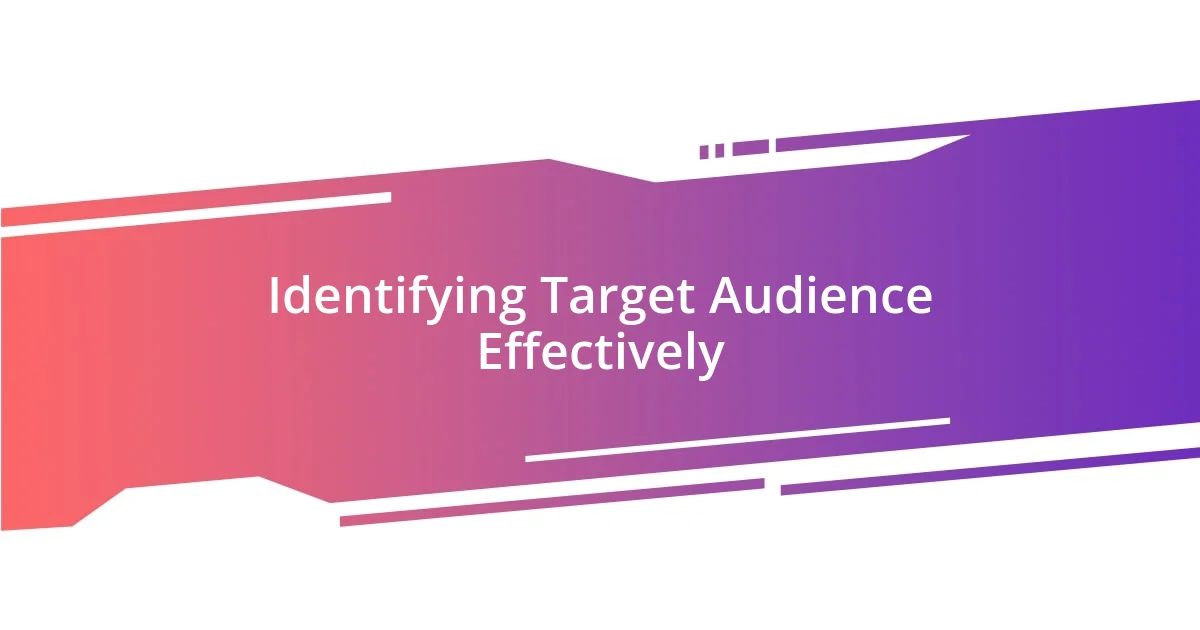
Identifying Target Audience Effectively
Identifying your target audience effectively is a game-changer in any product launch. I remember when I first started, I thought I knew my audience until I actually engaged with them. By hosting informal discussions on social media and even attending local meetups, I gained invaluable insights that refined my understanding. People don’t just fit demographic categories; they have unique motivations, pain points, and behaviors that need to be understood deeply.
To nail down your target audience, I recommend these strategies:
- Conduct Surveys: Engage potential customers through surveys to gather insights directly from them.
- Utilize Social Listening: Monitor social media conversations to understand trends and sentiments within your audience.
- Analyze Competitors: Look at who your competitors are targeting and what’s working for them.
- Create Personas: Develop detailed audience personas that capture key traits, desires, and challenges of your ideal customers.
- Test and Iterate: Launch small pilot campaigns to test your assumptions about the audience before the full launch.
Engaging deeply with these strategies transformed my approach; I felt a renewed connection to my audience that truly resonated during my product launch.
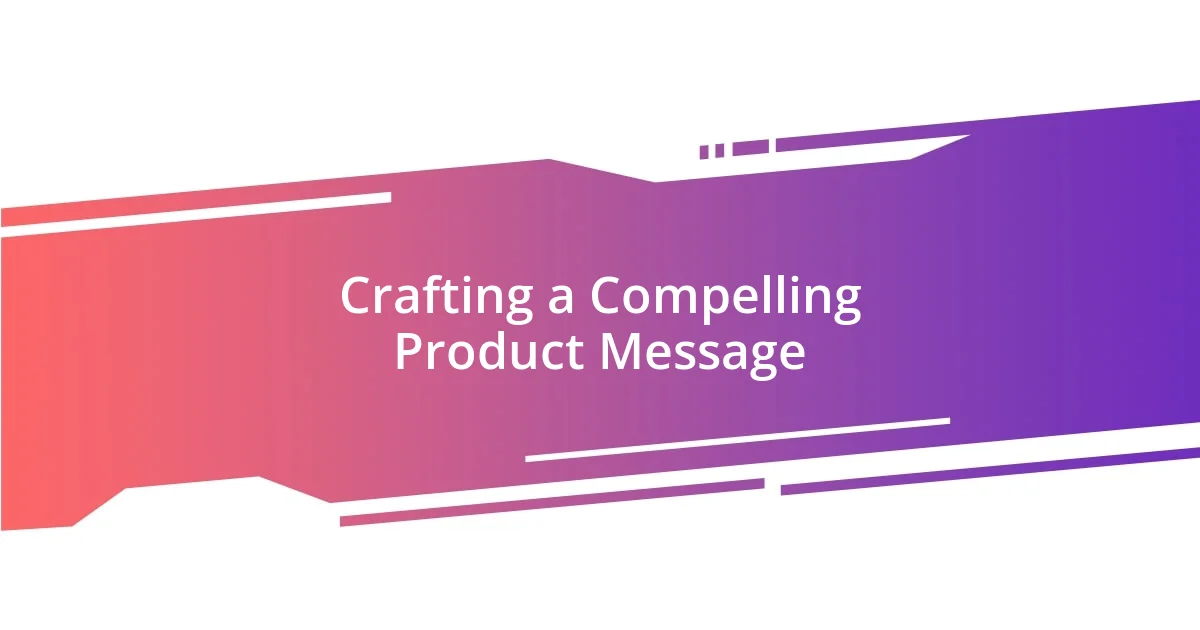
Crafting a Compelling Product Message
Crafting a compelling product message is about distilling your product’s essence into a clear, engaging narrative. I remember sitting for hours trying to find the perfect words to express what my latest product would bring to my customers. It wasn’t just about listing features; it was essential to articulate the transformation it promised. I found that using storytelling can resonate more deeply: how would this product solve a problem or enhance someone’s daily life?
One approach that really worked for me was testing different versions of my product message with a small focus group. I was amazed at how slight changes in wording could create such different reactions. For instance, when I shifted from a technical description to an emotional appeal—”Imagine a morning where you…”—the energy in the room changed entirely. People connected. They could see themselves in that scenario, which reinforced the importance of emotional resonance in message crafting.
I often ask myself: what do I want my audience to feel? Crafting messages that evoke emotions not only makes them memorable but also encourages action. When I incorporated customer testimonials into my messaging during a launch, it added authenticity that genuinely resonated with potential buyers. Their voices provided validation and built trust, reinforcing that my product wasn’t just another option in the market; it was a solution backed by real experiences. Engaging with my audience on this emotional level transformed my launches into meaningful conversations rather than mere transactions.
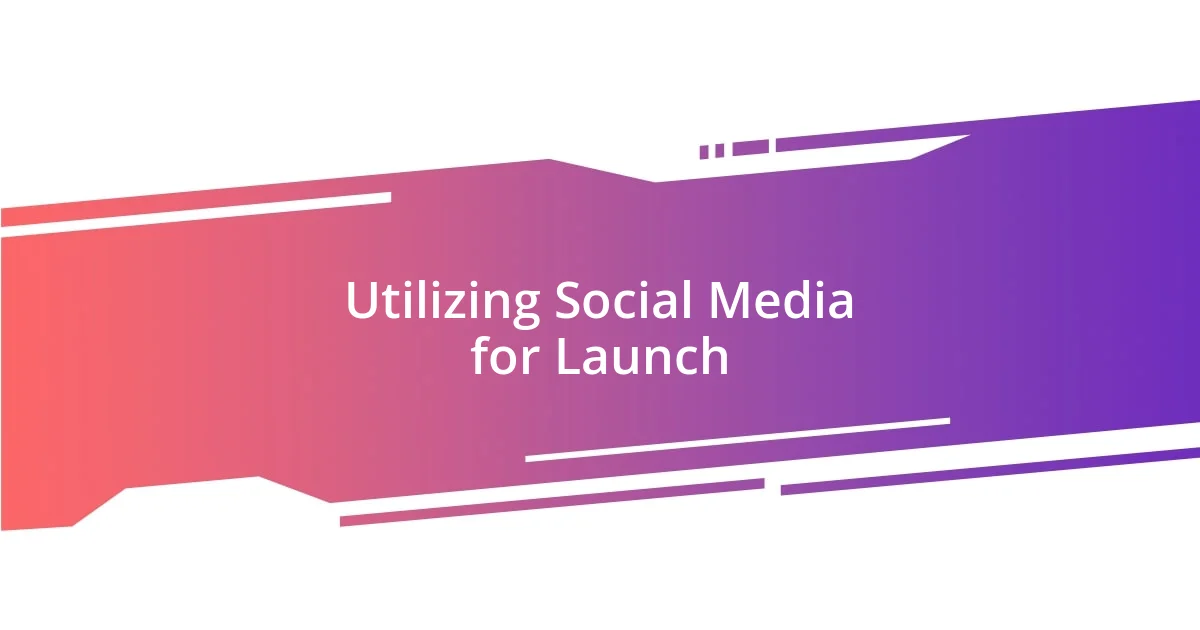
Utilizing Social Media for Launch
Utilizing social media for a product launch can be incredibly impactful when done thoughtfully. During my last launch, I decided to create a series of countdown posts across different platforms that built anticipation and excitement. I remember the thrill of watching the engagement grow; people were eager to share their thoughts, and it felt like we were creating a community around the product even before it hit the market. How often do we underestimate the power of hype?
In my experience, live Q&A sessions on platforms like Instagram or Facebook can be transformative. I found that being transparent and addressing questions in real-time made my audience feel valued and engaged. I recall one session where a potential customer shared their hesitance about my product’s compatibility with their lifestyle plans. By addressing their concerns promptly, not only did we build trust, but I also gained valuable insights that informed how I approached the product’s marketing. It was a reminder that social media can turn potential skeptics into enthusiastic advocates.
I’ve also learned that leveraging user-generated content can amplify your launch message. Encouraging early adopters to share their experiences creates a ripple effect. For instance, I once offered a small incentive for customers to share a photo using my product before the official launch. The authentic excitement in their posts not only validated my product but also created genuine buzz that word-of-mouth alone wouldn’t have achieved. It’s amazing how passionate advocates can turn social media into a powerful launchpad for success. Have you ever watched a product take off just because the customers were rallying behind it? It’s something I strive to capture each time I launch a new idea.
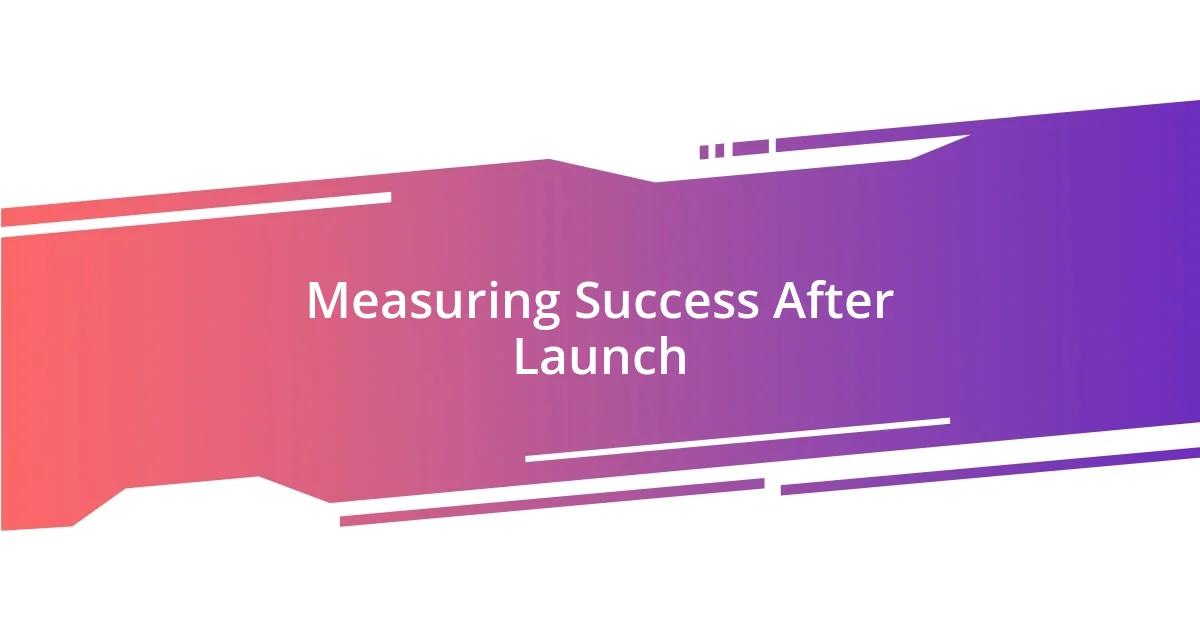
Measuring Success After Launch
Measuring success after a product launch isn’t just about crunching numbers; it’s about understanding the story those numbers tell. In my experience, tracking key performance indicators (KPIs) like sales figures, customer feedback, and social media engagement has provided me with a fuller picture. For example, after my latest launch, I noticed that while initial sales were promising, it was the customer reviews pouring in that truly highlighted the product’s impact.
Customer sentiment analysis has also become a vital part of my post-launch reflection. I often dive into reviews and social media comments to gauge how my audience feels about the product. There was one instance where I spotted a recurring concern about a specific feature. Instead of brushing it off, I used that feedback to improve and iterate. How often do we overlook valuable insights right in front of us? Engaging with this feedback loop has not only strengthened my product but also built a loyal community who felt heard and valued.
Lastly, I can’t stress enough the importance of measuring brand sentiment alongside sales metrics. I once conducted a survey a few weeks after a launch and was surprised to find that customers’ emotional connection to the brand was just as significant as their purchase decision. This little exercise opened my eyes to the fact that success is multifaceted. It’s not merely about the numbers; it’s about how my audience feels when they think of my product. Have you ever evaluated how perceptions shape your long-term success? That mindset shift has profoundly influenced my approach to future launches.
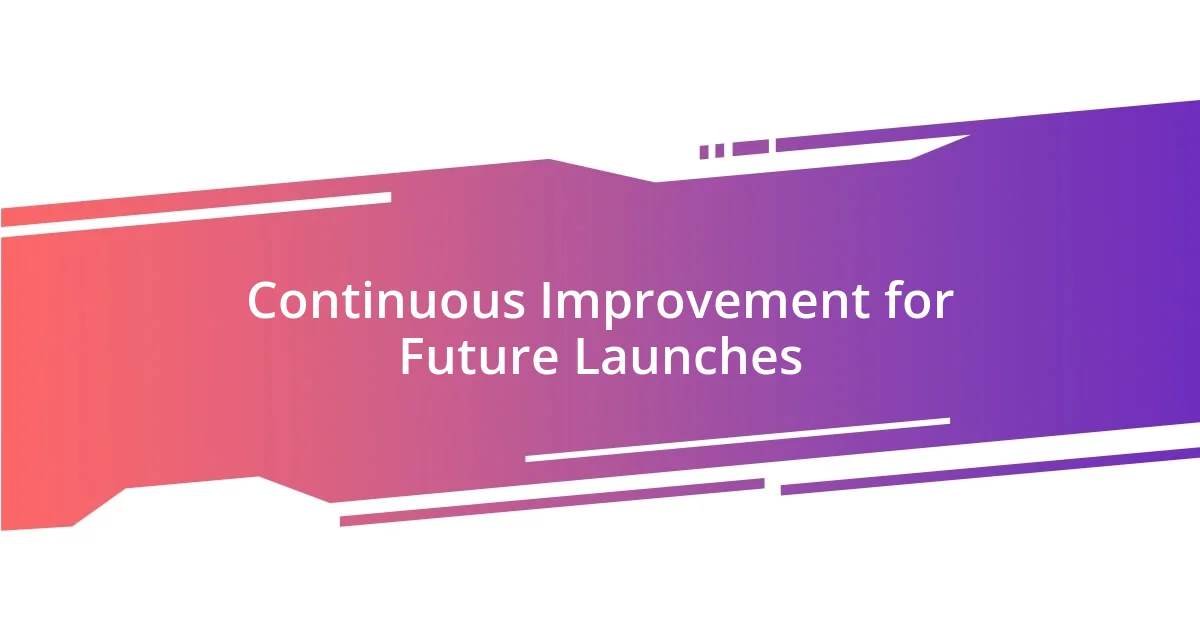
Continuous Improvement for Future Launches
Reflecting on past launches is crucial for continuous improvement. After one of my earlier launches, I sat down to dissect what went well and what didn’t. Surprisingly, I found that customer feedback on packaging and presentation resonated deeply with my audience. I’ve learned that paying close attention to these details can make a significant difference, and it feels like an opportunity to connect on a whole new level. Have you ever noticed how small tweaks can lead to bigger customer satisfaction?
Incorporating a post-launch debrief has been a game changer for me. I remember gathering my team after a particularly dynamic launch and encouraging everyone to share their thoughts, good and bad. Creating that safe space led to unexpected insights, like how a launch event we thought was a flop turned out to foster genuine relationships that influenced customer loyalty. I realized that these discussions foster growth and lead to actionable steps for the future. It’s amazing how collaboration can be a springboard for innovation, right?
I also believe in establishing measurable goals for each launch. During one of my launches, I set a goal to improve customer engagement by 20%. At the end of the campaign, we actually exceeded that goal! This experience underscored the value of setting targets and celebrating wins, no matter how small. Reflecting on these triumphs provides motivation for the next round of launches. Aren’t celebrations of progress essential for keeping the passion alive in our work? Each milestone feels like a step forward, reinforcing the commitment to learn and evolve.










